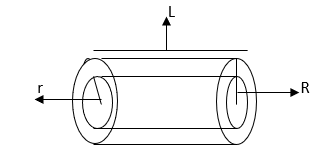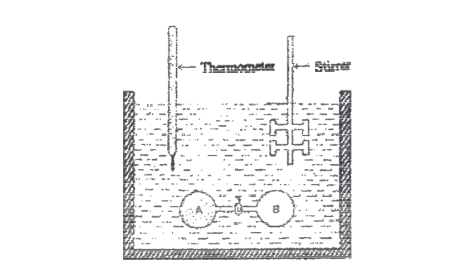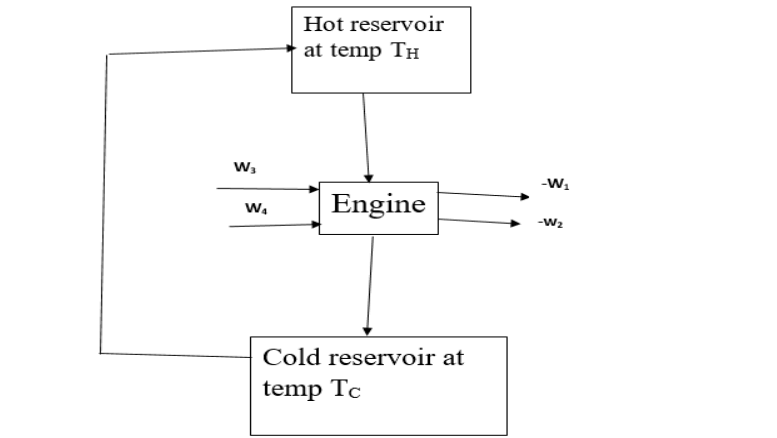THERMOFLUIDS/FLUID MECHANICS
Recommend a friend a friend a friend

Problem Solved; Question 06. Write short notes about..applied in fluid mechanics.
fluid mechanics fluid mechanics problems Question six (a) Write short notes about the following as they are applied in fluid mechanics (i) Uniform flow. = Uniflow is a flow in which the velocity is the same at a given instant at every point in the fluid. (ii) Uniform stead flow This flow is the one in which all conditions at6 any point in a stream remains constant with respect to time, here the quantity of liquid flowing per second through any section is constant. (b)Consider a cylinder of fluid of length L and radius R flowing steadily in the center of a pipe of radius r as shown below. Show that when the flow in the pipe is laminar the pressure loss is directly proportional to the velocity and obeys the equation. Where v is the velocity D is the diameter of the pipe

Problem solved, Question 03, What is meant by the term the entropy of a system
What is meant by the term the entropy of a system Question three (a) What is meant by the term the entropy of a system? = The entropy of a system is referred to as the measure of randomness or disorder of a system, it also describes how much energy is not available to do work. The more disordered a system and the higher the entropy, the less of a system’s energy is available to do work. (b) Show that the entropy change of a system at constant pressure is governed by the equation Cp In (T2/T1) ANSWER Pressure = (p) CP = The heat capacity CPdt = dqp then divide through with T CPdt/T = dqp/T But Dqp/T = ΔS ΔS = dqp/t = CPdt/t Integrating T1 → T2 ΔS = ∫T1T2 CPdt/T = CP∫T1T2 dt/T ΔS = CPIn(T)T2/T1 ΔS = CP = (InT2-T1) = CPIn (T2/T1) CP = In(T2/T1) ΔS = CPIn(T2/T1) (c) At 1 atmosphere, Toluene (methyl benzene) boils at 110oc and its latent heat of vaporization is 33470J/mol. Estimate the entropy change when Toluene is heated from 100oc to 130oc assuming that in this temperature range the heat capacities (Cp) of the liquid and the vapor are180JK-1mol-1 and 120JK-1mol-1 respectively. ANSWER 100°c → 110°c CP = 180 110°c → 130°c CP = 120 Converting to kelvin (100 + 273) = 373K T1 (110+273) = 383K T2 ΔS1 = CPIn(T2/T1) = 180In(383/373) = 4.76JK-1mol-1 ΔS2 = ΔQ/ΔT2 = 33470/383 = 87.39JK-1mol-1 ΔS3 = 120In(403/383) Note, Here, T2 = 130 + 273 = 403 = 6.11JK-1mol-1 ΔST = ΔS1+ΔS2 +ΔS3 = 4.76 + 87.39 + 6.11 = 98.26 JK-1mol-1 (d)A steam engine operates between 200K and 500K. What is the minimum amount of heat that must be withdrawn from the hot reservoir to obtain 1000 joules of work? ANSWER TC (Cold) = 200k TH (Hot) = 500K W = 1000J Efficiency = TH – TC/TH =W/QH = 500 – 200/500 = 1000/QH QH = 0.6 Q = 1666.67J Which is the amount of heat required to be withdrawn from the reservoir. What is meant by the term the entropy of a system

Problem 02 Solved, A Carnot engine that operates..
A Carnot engine A Carnot engine problem. Question two (a) An engine that operates between the temperatures TH = 850K and TC = 300 K performs 1200 J of work per cycle; (i) What is the efficiency of this engine? [4 marks] Efficiency TC = 300K TH = 850K W = 1200J Eff = TH -TC/TH = 850 – 300/850 Eff = 0.647 = 64.7% (ii) How much heat is extracted from the hot reservoir? [3 marks] Amount of Heat. Eff = W/QH 0.647 = 1200/QH QH = 1854.7J (b) If a Carnot engine operates with efficiency of 40 %. How much must the temperature of the hot reservoir increase, so that the efficiency increases to 60 %? The temperature of the cold reservoir remains at 9 0C. Eff = 40% Increase = 60% TC = 9°C ⇒ 282K(Rankine) TH1 = ? Eff = TH1 – TC/TH1 0.4 = TH1 – 282/TH1 TH1 – 0.4TH1 = 282 0.6TH1 = 282 TH1 = 470K Efficiency at 60% = 0.6 TC = 9°C ⇒ 282K(Rankine) Eff = TH2 -TC/TH2 0.6 = TH2 -282/TH2 0.6TH2 = TH2 – 282 TH2-0.6TH2 = 282 0.4TH2 = 282 TH2 = 705K TH = TH2– TH1 ⇒ 705 – 470 TH = 235K Watch Carnot cycle operation, video by earthpen.

Problem solved; thermodynamics Question 01, Define the first law of ..
The first law of thermodynamics Question one (a) (I) Define the first law of thermodynamics and give the expression in which it is based defining all the terms involved. [3 marks] ANSWER = The first law of thermodynamic states that, Energy can neither be created nor destroyed, if it disappears in one form, it must appear in some other equivalent form. ΔU = a + w where a, = Heat absorbed by the system w, = Work done on the system. (ii) Differentiate between thermochemistry and thermodynamics. [3 marks] = Thermochemistry is a branch of chemistry which deals with the investigation of energetics and feasibility of chemical reactions and physical changes, while Thermodynamic is the branch of science dealing with the relations between energy, heat and work and the accompanying changes in the nature and behavior of various substances around. (b) State the third law of thermodynamics. [2 marks] = The third law of thermodynamic states that, the entropy of a pure and perfectly crystalline solid tends to zero as temperature tends to absolute zero. (c) At 1 atmosphere, Toluene (methyl benzene) boils at 110oC and its latent heat of vaporization is 33470 J/mol. Estimate the entropy change when Toluene is heated from 100 0C to 725.4 0 Rankine assuming that in this temperature range the heat capacities (Cp) of the liquid and the vapor are 120 JK-1mol-1 and 180 JK-1mol-1 respectively. [6 marks] ANSWER. Convert to degree Celsius to Rankine. From 100°c → 110°c = 725.4° Rankine, (K) From 100° → 110° T1 = 100°c → 373K T2 = 100°c →373K CP = 120JK-1mol-1 ΔS1 ⇒ CPIn(T2/T1) ΔS1 ⇒ 120In(383/373) = 3.17JK-1mol-1 At 110°c ΔS2 ⇒ QH/T2 ⇒ 33470/383 = 87.39JK-1mol-1 From 110°c → 725.4° Rankine ΔS3 ⇒ CPIn(T2/T1) ⇒ in this case T2 = 403.3, T1 = 383 and CP = 180. ΔS3 ⇒ 180In(403.3/383) = 9.30JK-1mol-1 ΔS = ΔS1 + ΔS2 + ΔS3 ⇒ 3.17 + 87.39 + 9.30 = 99.86 JK-1mol-1 (d) Show that Cp and Cv are connected by the equation CP-CV = R where CP and CV are the specific heats of a gas at constant Pressure and volume respectively and R is the universal gas constant (R = 8.314 Jmol-1K-1). [4 marks] Cp and Cv are related by the equation that Cp-Cv =R From the first law of thermodynamics H=U+PV…………………………… (i) Given that PV=nRT for one mole of (n=1) then PV= RT H =U+RT Taking differentials on both sides, we get dH=dU+RdT………………………(ii) From dU = dQ+PdV at constant volume, PdV=0 Then du=dQ From Cv=𝑑𝑄𝑣 then dQv = CvdT 𝑑𝑇 du=CvdT (At constant volume)………………. (iii) At constant pressure dH = dQ =CpdT ie dH =CpdT……………………(iv) Substituting for dU and dH from equation (iii) and (iv) to equation (ii) CpdT=CvdT+RdT CpdT= (Cv+R) dT Cp =Cv+R Cp-Cv=R The first law of thermodynamics problem.

